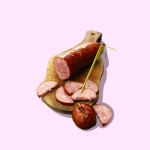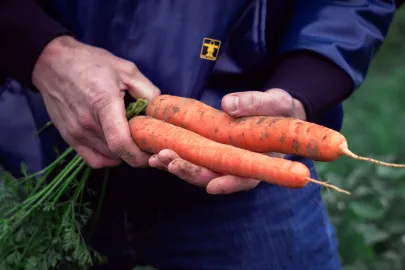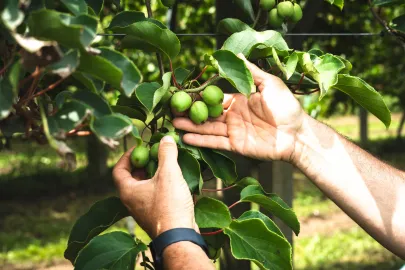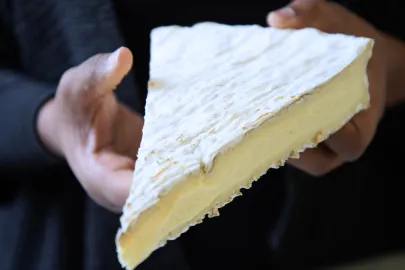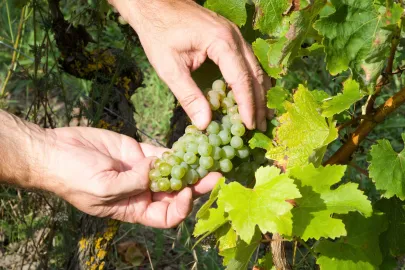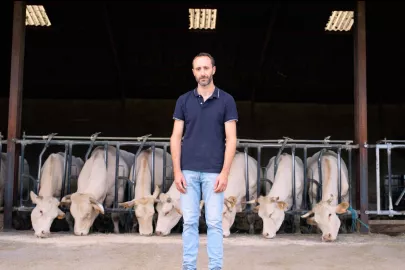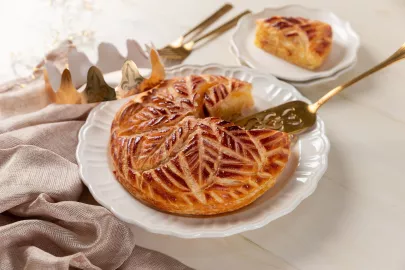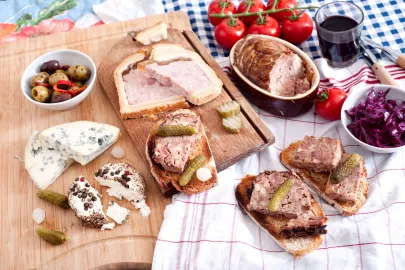Arriving in Malbuisson, in the Jura Mountains, we head for Maison Grésard to learn more about this delicious traditional smoked sausage - a culinary icon of the Franche-Comté region.
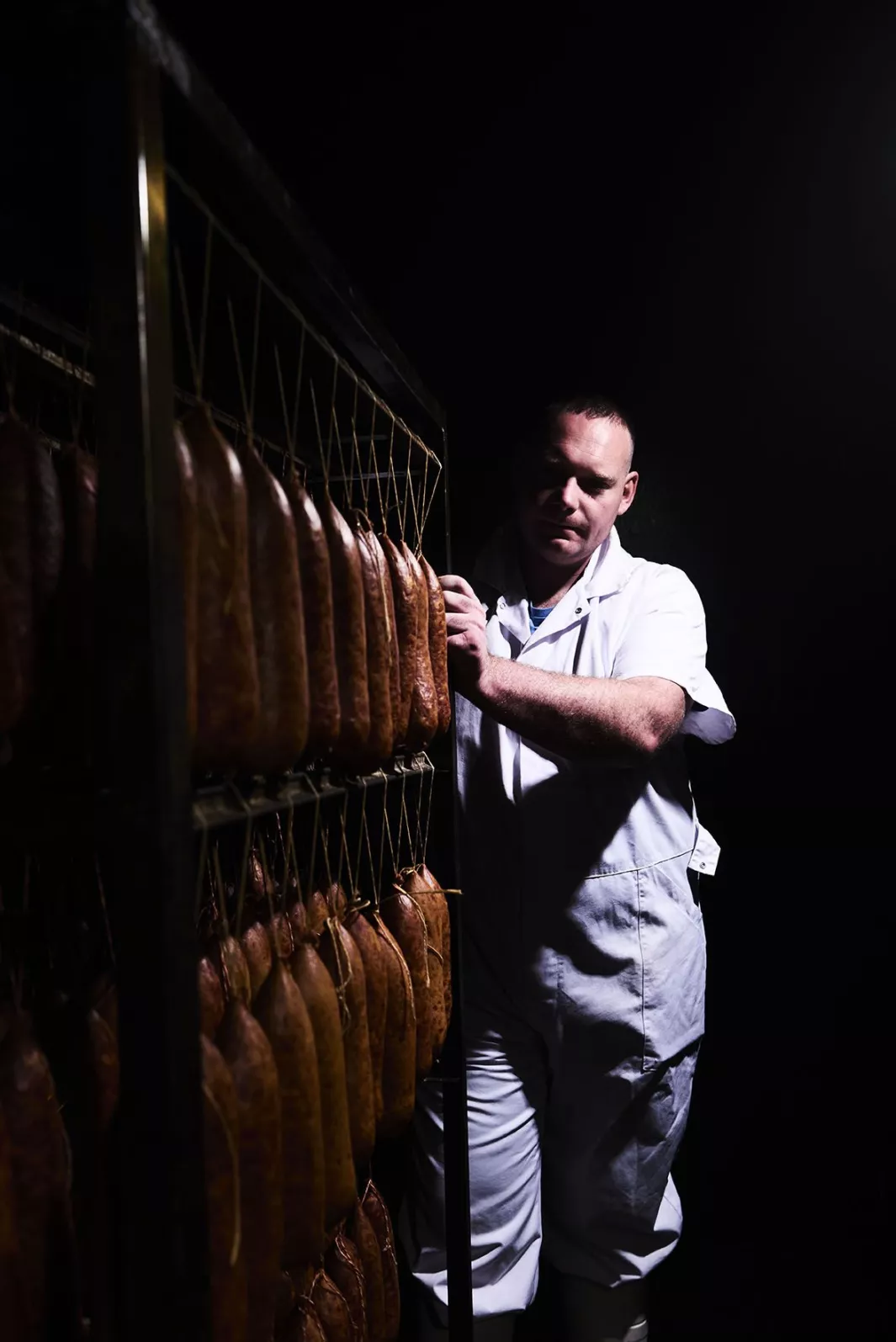
The old farms of Haut-Doubs, in eastern France close to the Swiss border, still often feature a typical example of local architecture – the tuyé. A huge, pyramid-shaped chimney once used to smoke salted meat, sometimes 12 to 15 meters high, which towers above the main room in Franche-Comté farmhouses. Although very few families continue this tradition at home, meat curers, whose star regional cured meat products include the celebrated Morteau sausage, continue to ply their trade.
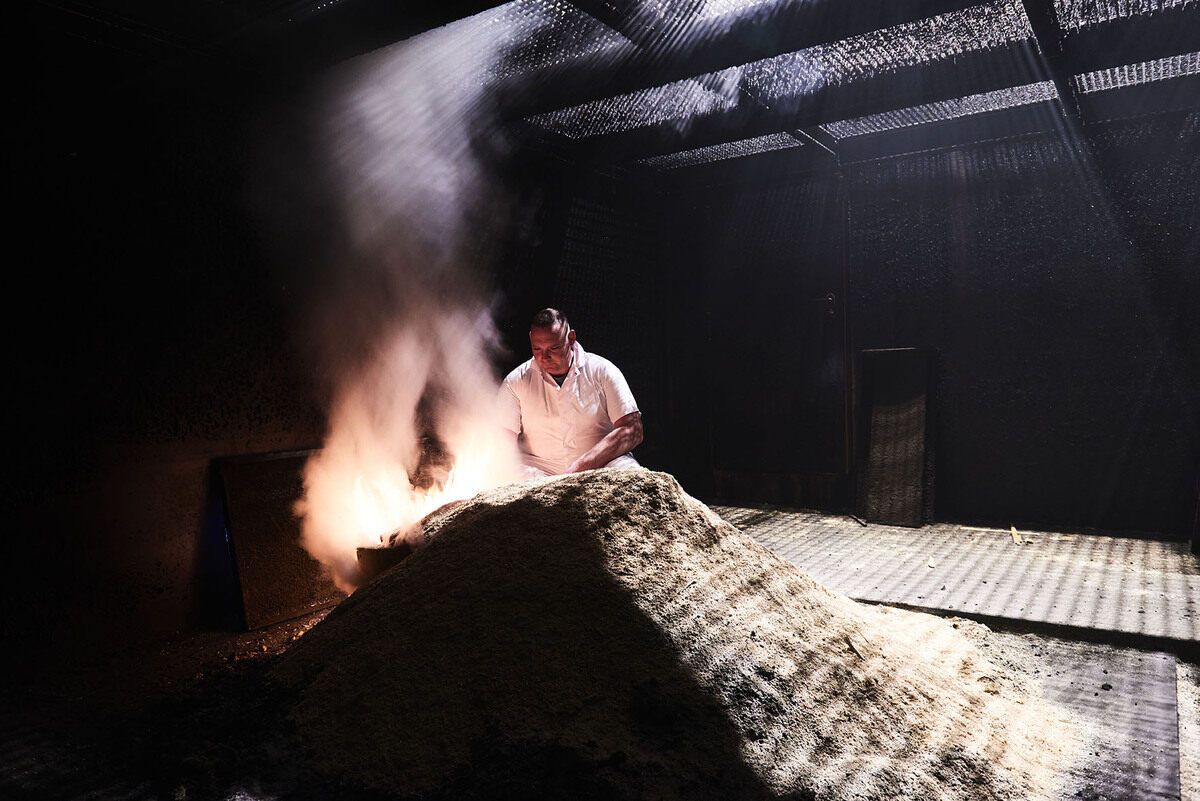
© ©Louis-Laurent Grandadam
A bite of heritage
The sausage dates at least as far back as the 16th century. At the time, smoking was the best way to conserve meat once a pig had been slaughtered. Little by little, Morteau sausage – recognizable by its girth, amber color, the wooden dowel used to close one side, its coarse mince and, of course, its smoked taste – built a reputation for itself outside Franche-Comté. It now tops the bill of local fine produce, alongside Comté and other cheeses. It could easily have disappeared, however, a distant memory in antiquated recipe books, if the industry had not had the foresight to group together to safeguard its quality, authentic taste and geographic origin, which is restricted to Jura, Doubs, Haute-Saône, and Territoire de Belfort.
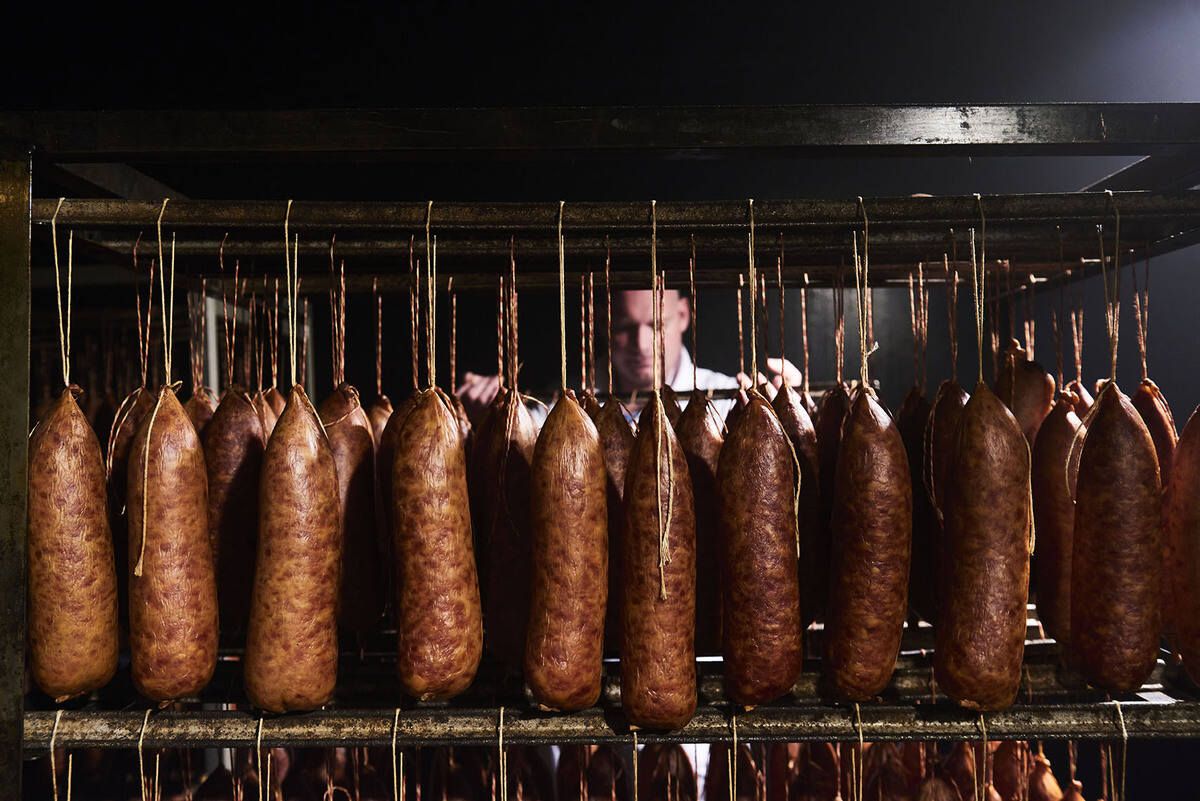
© ©Louis-Laurent Grandadam
An array of accolades
Pig farmers, slaughterers/cutters and meat curers made common cause to save this culinary heritage, resulting in IGP (Protected Geographical Indications) certification in 2010 – and a strict set of specifications! Besides IGP, some Morteau sausage producers have also been awarded the ‘Label rouge’, an official mark of quality assurance. From pig feed to sausage production and smoking time, nothing is left to chance. This dual certification remains the exclusive preserve of the very best products.
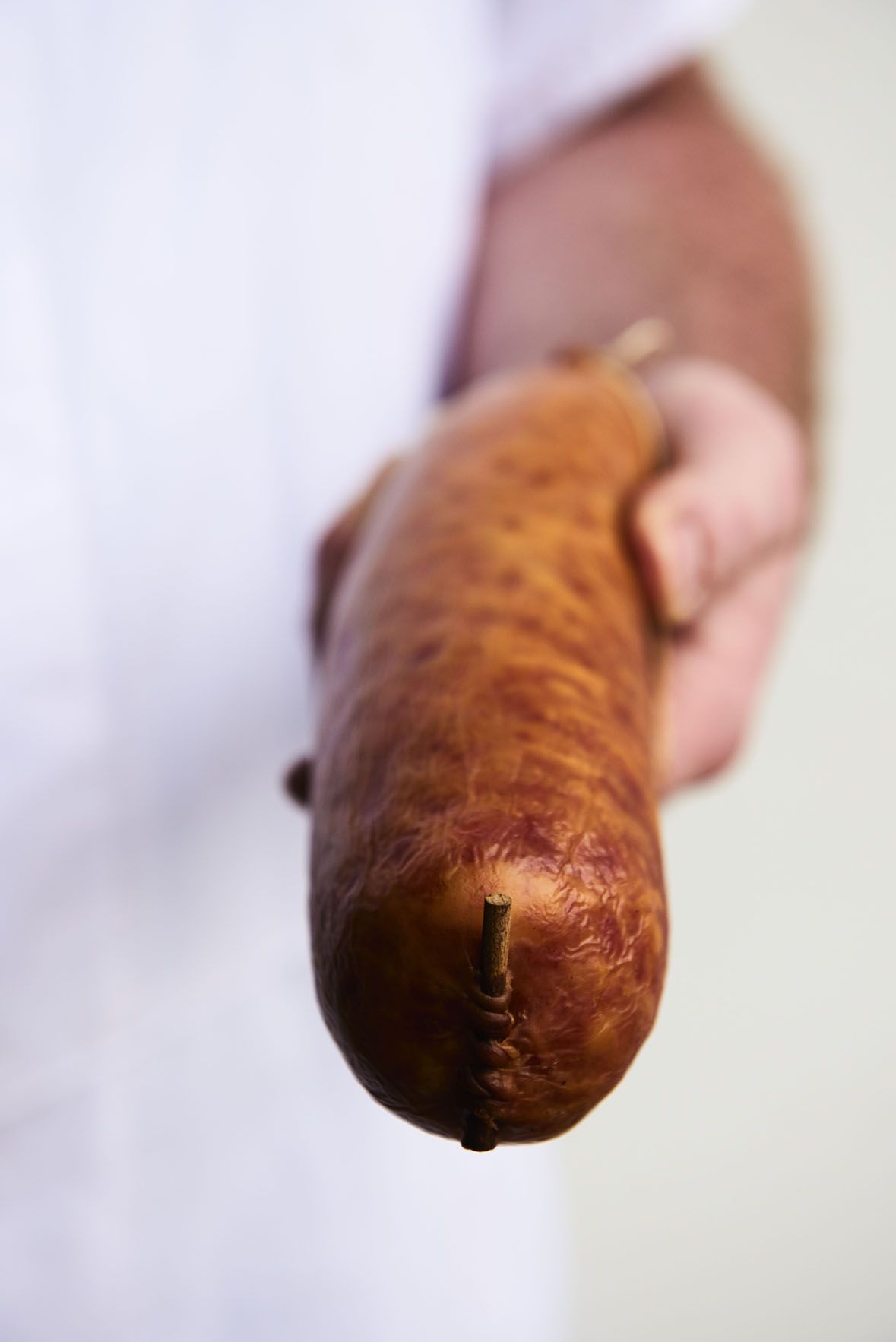
© ©Louis-Laurent Grandadam
Keeping artisanal expertise alive
Some thirty or so meat curers now regularly enter the “Morteau” competition. They include Grésard, a company based in Malbuisson, in the Haut-Doubs. The tuyé is easy to spot at the center of the village. Little has changed over the course of three generations – the process remains completely artisanal. Production manager Florian Locatelli offers a few examples: “Although pigs only need to be from Franche-Comté for Label rouge products, we also work with local farms for the IGP sausages. Whereas others produce and smoke the same day, we decided to produce one day and smoke two days after, leaving time for the taste of the sausages to mature before smoking.” Hung on trolleys, the pork is then arranged in the tuyé, which produces a more even, delicate smoke than the smoke chambers used by some producers. The process involves burning untreated sawdust from resinous wood under the grid floor.
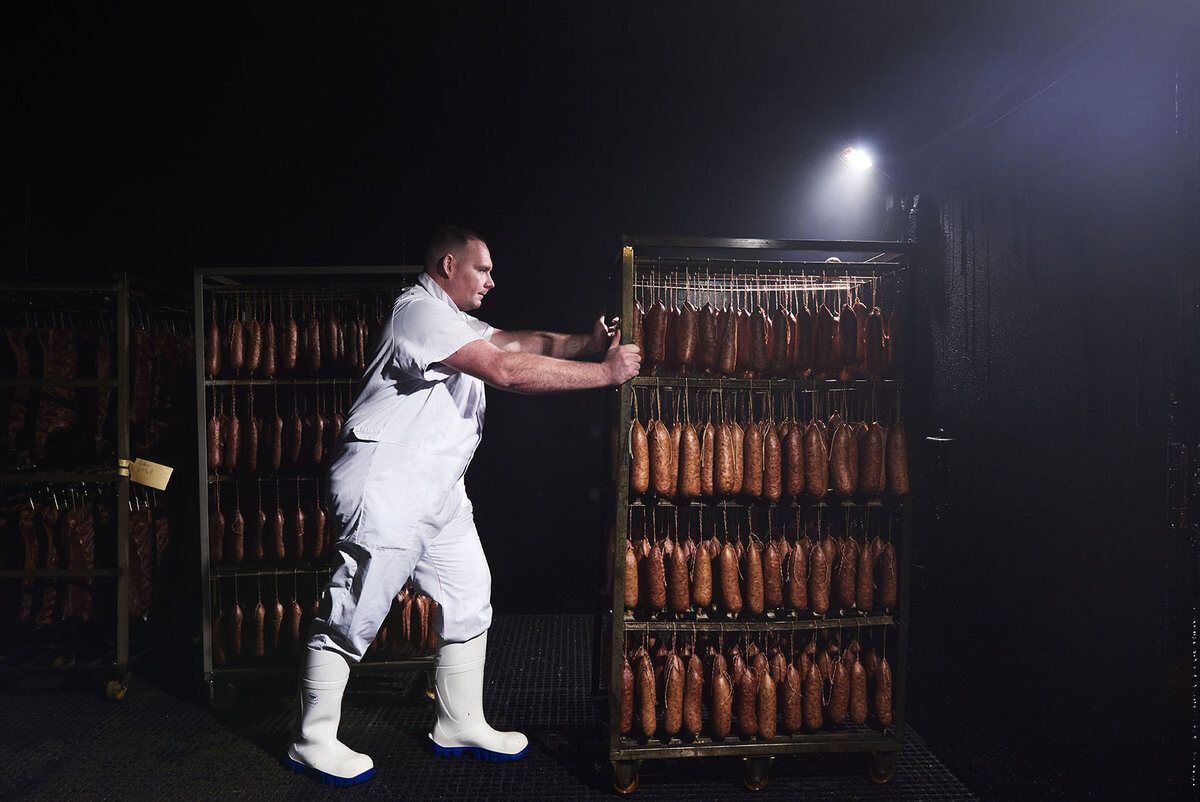
© ©Louis-Laurent Grandadam
Tasty!
How can you tell? By trying it! Morteau sausages by Grésard are among the best on the market: “Wrapped in natural casing, they keep their shape while being relatively soft, subtly combining the taste of well-reared pork with a smoky flavor that is present but never overwhelming.” How do you eat it? Start by following the instructions supplied by the organization for the defense and promotion of IGP cured meat and salt meat of Franche-Comté:“Simmer in water for 43 minutes without pricking the skin and then enjoy hot or cold.” As a first course or main dish, the Morteau sausage is perfect served with heaps of vegetables, especially potatoes for a deliciously rustic pairing. Unsurprisingly, they are often found in traditional sauerkraut recipes from Alsace and Lorraine.
Contributor

Editor

